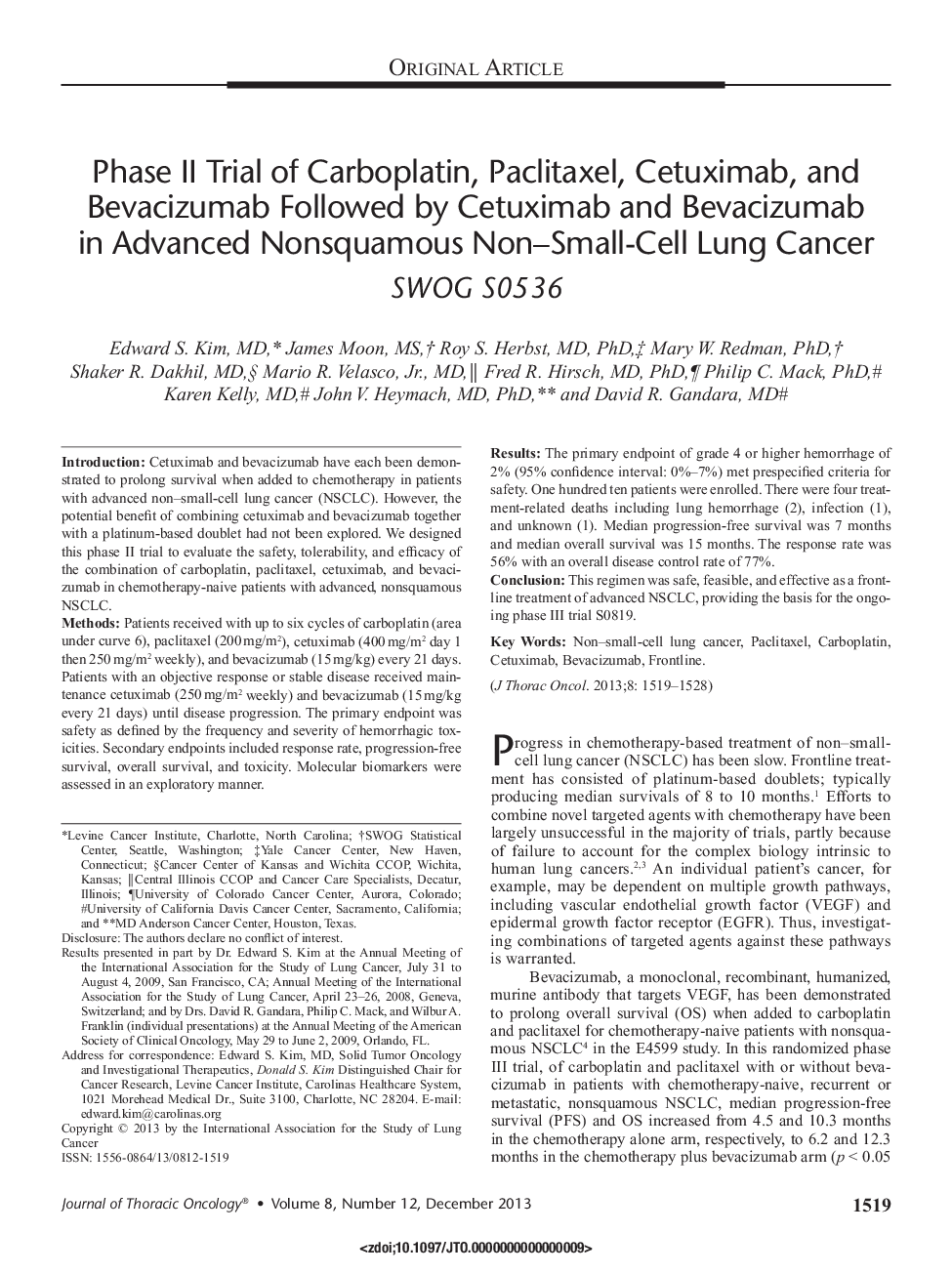| Article ID | Journal | Published Year | Pages | File Type |
|---|---|---|---|---|
| 3989863 | Journal of Thoracic Oncology | 2013 | 10 Pages |
Introduction:Cetuximab and bevacizumab have each been demonstrated to prolong survival when added to chemotherapy in patients with advanced non–small-cell lung cancer (NSCLC). However, the potential benefit of combining cetuximab and bevacizumab together with a platinum-based doublet had not been explored. We designed this phase II trial to evaluate the safety, tolerability, and efficacy of the combination of carboplatin, paclitaxel, cetuximab, and bevacizumab in chemotherapy-naive patients with advanced, nonsquamous NSCLC.Methods:Patients received with up to six cycles of carboplatin (area under curve 6), paclitaxel (200 mg/m2), cetuximab (400 mg/m2 day 1 then 250 mg/m2 weekly), and bevacizumab (15 mg/kg) every 21 days. Patients with an objective response or stable disease received maintenance cetuximab (250 mg/m2 weekly) and bevacizumab (15 mg/kg every 21 days) until disease progression. The primary endpoint was safety as defined by the frequency and severity of hemorrhagic toxicities. Secondary endpoints included response rate, progression-free survival, overall survival, and toxicity. Molecular biomarkers were assessed in an exploratory manner.Results:The primary endpoint of grade 4 or higher hemorrhage of 2% (95% confidence interval: 0%–7%) met prespecified criteria for safety. One hundred ten patients were enrolled. There were four treatment-related deaths including lung hemorrhage (2), infection (1), and unknown (1). Median progression-free survival was 7 months and median overall survival was 15 months. The response rate was 56% with an overall disease control rate of 77%.Conclusion:This regimen was safe, feasible, and effective as a frontline treatment of advanced NSCLC, providing the basis for the ongoing phase III trial S0819.
